The Twilight of the Peaks

Compiled by Colin Alexander
Images from The Transport Treasury archive
Introduction
As part of its 1950s Modernisation Plan, which ultimately aimed to eliminate steam traction, British Railways ordered 174 diesel locomotives of fourteen different designs in order to evaluate different engines and transmissions, etc. This programme was known as the Pilot Scheme; its intention being to evaluate the reliability and performance of each type in service before commissioning larger orders. What happened in practice was that bulk orders were placed for several of those designs before any long-term testing was completed, but that’s another story. This book focuses on one of those fourteen designs that was an undoubted success.
Eleven of the Pilot Scheme designs came from private manufacturers, with very mixed results, but three types were constructed in BR’s own workshops, including two diesel-electric classes built at the former Midland Railway works at Derby. One of these was a batch of twenty Type B, later Type 2 Bo-Bo locomotives powered by six-cylinder, 1,160hp 6LDA28 engines. The power units were built by Vickers-Armstrong of Barrow-in-Furness under licence from established Swiss manufacturer Sulzer. They would become Class 24, and would eventually number 151 units.
The twelve-cylinder version of the same Sulzer engine, the 2,300hp 12LDA28A, was used to power the other Derby-built class, the most powerful of the Pilot Scheme designs. Ten of these locomotives were built, employing the same 1CoCo1 wheel arrangement used on Oliver Bulleid’s three prototype diesels 1020110203, and on the English Electric Type 4s. The sixteen-wheel design was used to spread the weight and reduce axle loading.
The new locomotives were numbered D1-D10, of Type C/Type 4, later Class 44. All ten were named after mountains in England and Wales, so they became known as the ‘Peaks’. The first one, D1 Scafell Pike appeared on test in April 1959, entering service in August, and was allocated to Camden shed in north London.
The second of the original Peaks, D2 Helvellyn, was fitted with an uprated 2,500hp version of the Sulzer engine and trialled on the West Coast Main Line. At this time it was recorded at a maximum speed of 100mph, 10mph faster than the Peaks would officially be permitted in normal service. This uprating of the power unit was achieved by charge air-cooling, and it meant that the 12-cylinder Sulzer was the most powerful diesel engine on Western European railways at that time.
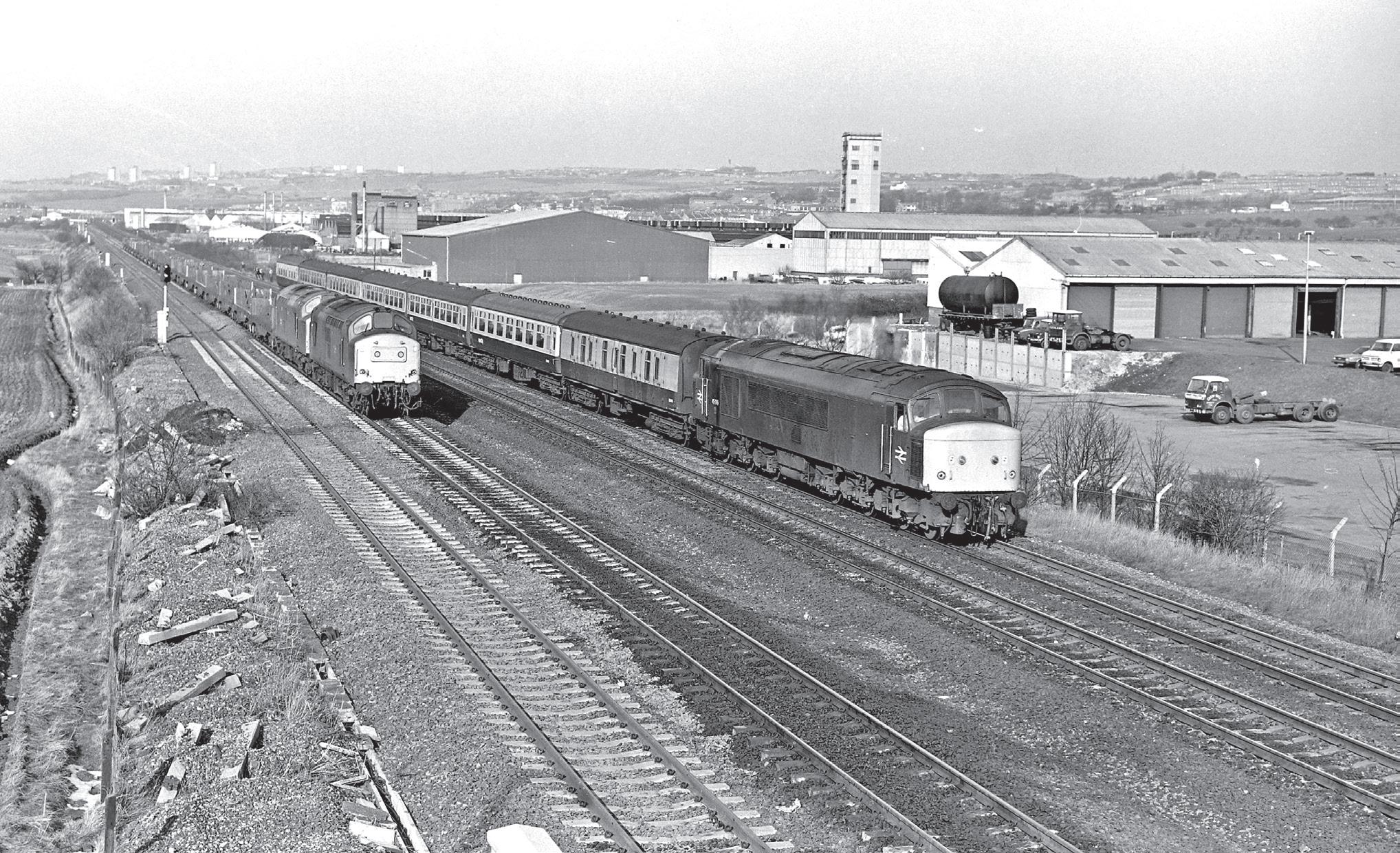
The first ten Peaks were initially used on express passenger trains on the West Coast and Midland main lines out of Euston and St Pancras, and although they were a success, from 1962 onwards they spent the rest of their working lives on Midland Region freight services based at Toton depot.
As the tower blocks of Gateshead recede into the distance, Class 45/0 45019 gathers speed past Ouston Junction, Birtley, heading for Durham with a Newcastle Central to Liverpool Lime Street train. It is overtaking a pair of English Electric’s dependable 1,750hp Class 37s, 37173 & 37101 as they run parallel with a freight train on the slow line. The date is Tuesday 22nd February, 1983. Derby-built 45019 was originally D33, and entered BR service in 1961. The two class 37s, meanwhile, soldiered on well into the 1990s.

On 29th June 1983, Class 45/1 45108 has just crossed Ribblehead Viaduct and is passing the lonely station of the same name with 1E23, the 10.00 Carlisle to Leeds train. The station had closed in 1970, but reopened in 2000. Whernside, seen in the background, is one of the three peaks that surround Ribblehead, and all three gave their names to original BR Peaks, the other two being Ingleborough and Penyghent. Britain had a long tradition of applying fine names to its best locomotives. Some of the more recent choices of name, such as that bestowed in the 1990s on Class 86 electric 86222 Clothes Show Live, were less inspired! 45108, formerly D120, is preserved as part of the extensive heritage diesel fleet at the East Lancashire Railway, Bury.

On 30th August 1985, 45066 was photographed departing Follingsby Freightliner Terminal, just off the Leamside line southeast of Pelaw. It is departing with 4V73 for Pengam, near Cardiff. Like 45146 seen earlier, the high positioning of its number is the result of an overhaul at Crewe works. 45066 was built there in 1961 as D114, then following withdrawal in 1987 it was reinstated as departmental 97413. It was eventually taken out of service in July 1988. Follingsby closed in 1987, to be followed in 1992 by the entire Leamside line between Pelaw and Tursdale Junction, north of Ferryhill. Its northernmost section may see trains again in the future, however, if plans to use the trackbed to connect the Metro between Pelaw and South Hylton via Washington ever come to fruition.
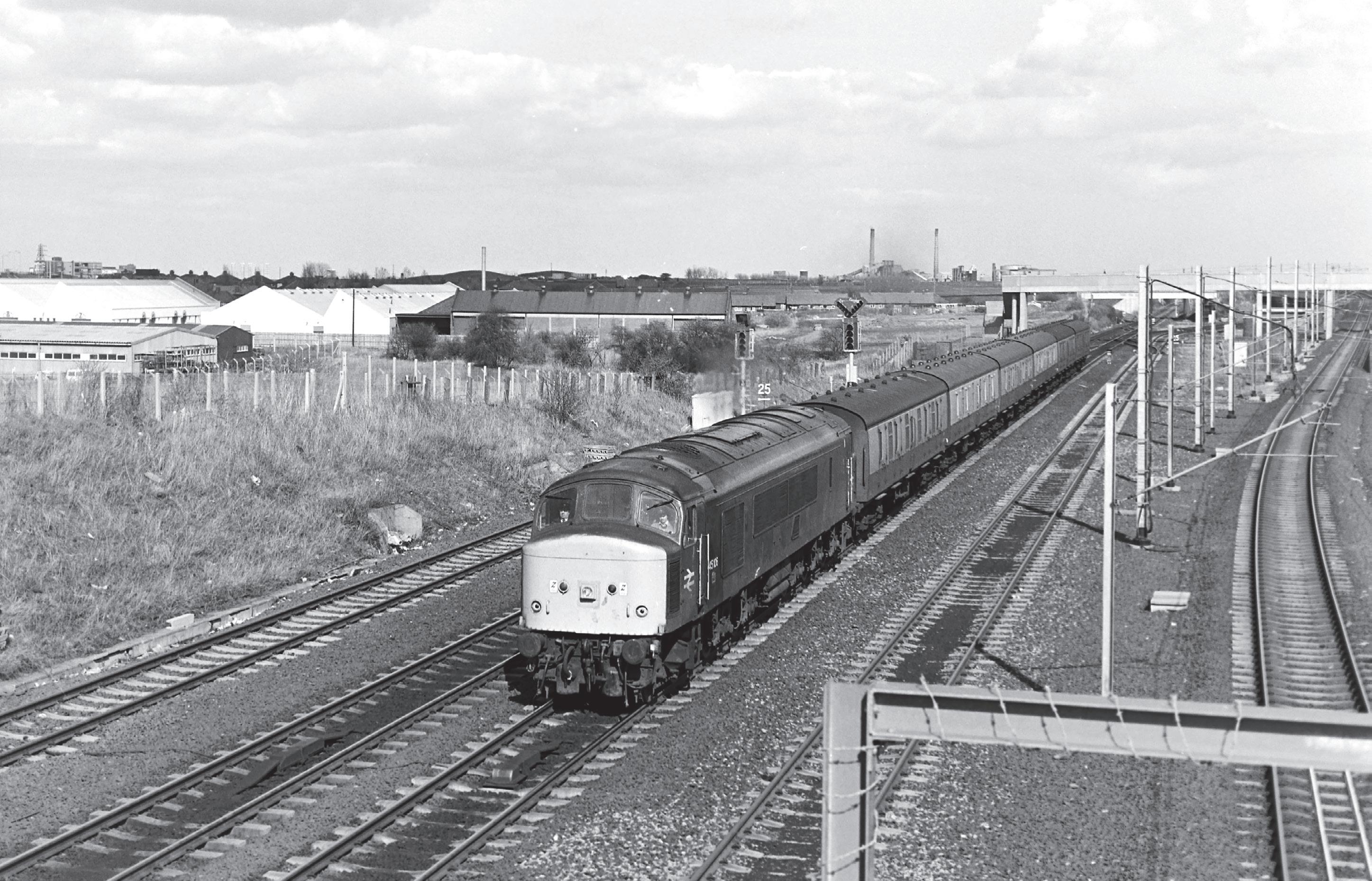
On 29th April 1986, 3N04, the daily van train from Sunderland to Newcastle approaches Pelaw behind 45106. This conveyed parcels from the Sunderland depot of the Brian Mills mail-order catalogue. Pelaw was a three-way junction where the South Shields and Leamside lines diverged from the former Brandling Junction Railway from Gateshead to Sunderland. Monkton coke works is on the horizon, and the overhead catenary for the Tyne & Wear Metro line to South Shields can be seen on the right. It crosses the Sunderland line, which was eventually converted for Metro use in 2002, on a flyover.
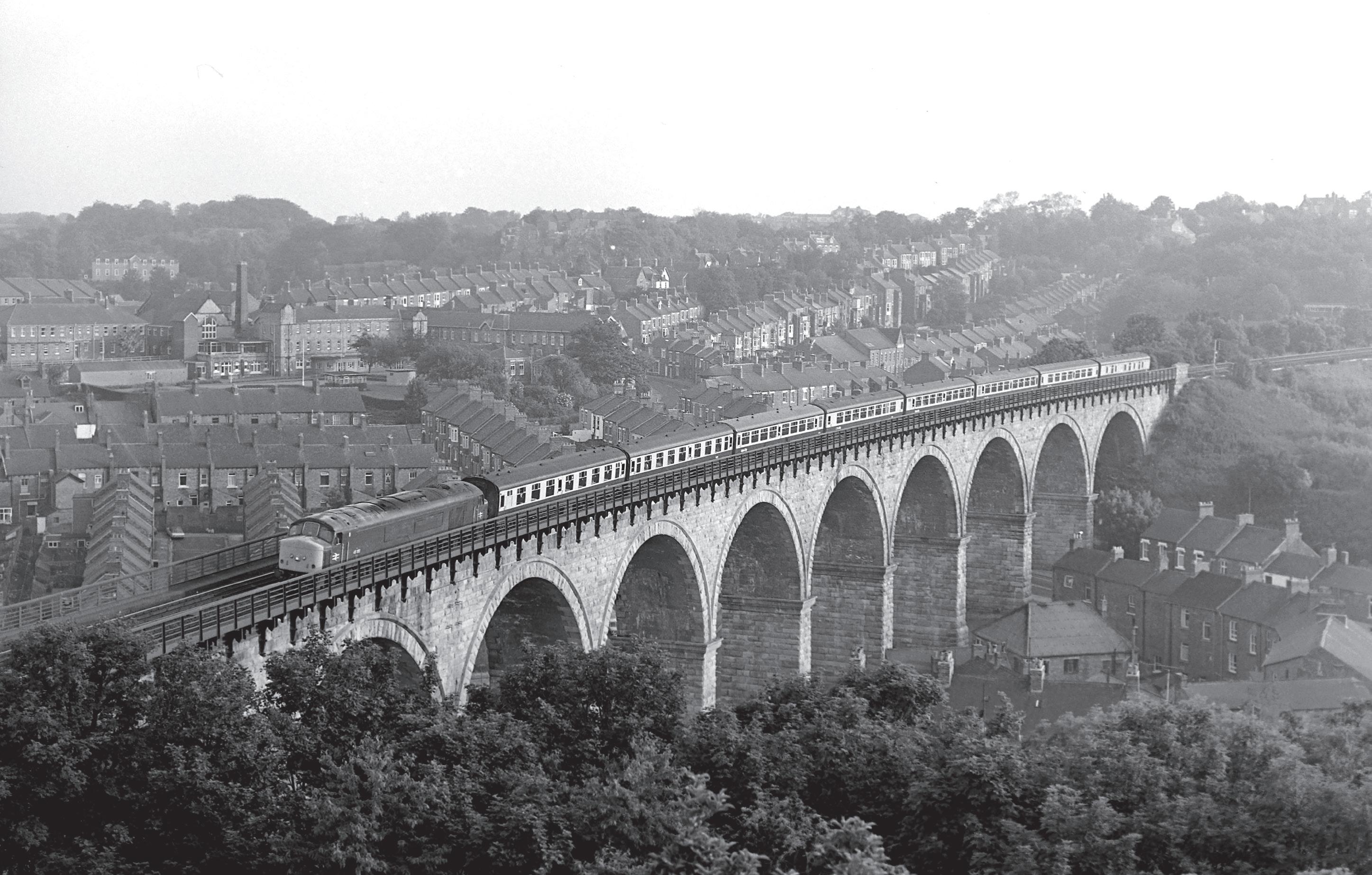
The eleven sandstone arches of Durham’s magnificent viaduct carry the East Coast Main Line one hundred feet above the streets, and have provided rail passengers with superb views of the city’s cathedral and castle since 1857. Northbound Class 45/1 45132 is about to arrive at Durham station, viewed from Wharton Park on 26th June 1986. The train is 1E88, the 16.03 Liverpool Lime Street to Newcastle Central. 45132 was Derby-built in 1961 as D22, and following withdrawal in 1987, entered preservation. It now resides at the Epping Ongar Railway in Essex, formerly an outpost of the London Underground’s Central Line.
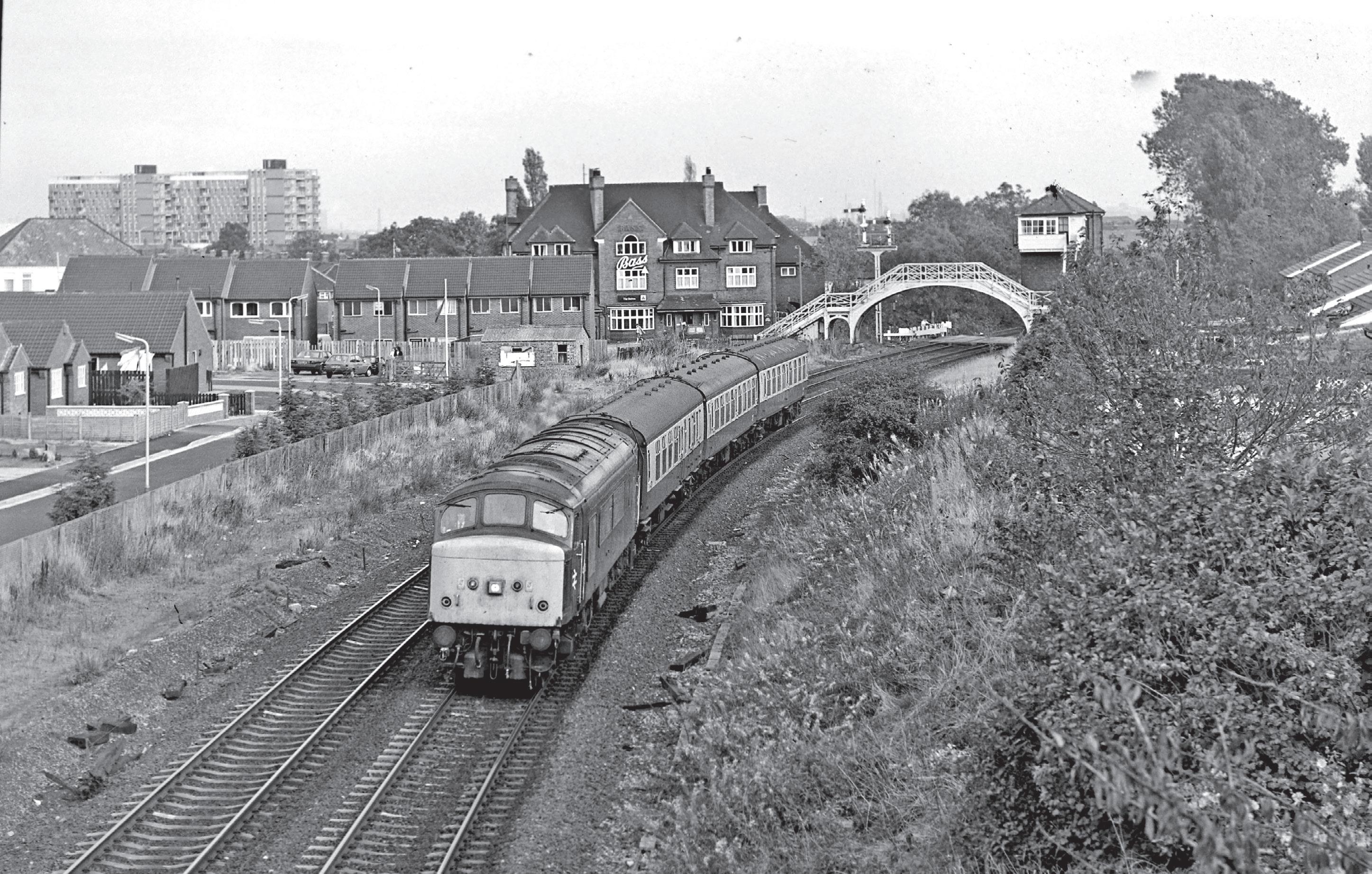
With the imposing Station Hotel, the NER footbridge and signal box in the background, this is the site of the original Billingham station, north of Stockton-on-Tees. It closed in 1966 when a new station was built half a mile east, to better serve the new town. On 8th October 1986, Class 45/1 45126 was employed to replace the usual DMU on the 13.17 Newcastle to Middlesbrough service. Availability of DMUs was critically low at the time and locomotive-hauled substitutions were common. 45126 was previously numbered D32, emerging from Derby works in 1961, and lasting in service until April 1987. The footbridge and signal box are now gone.
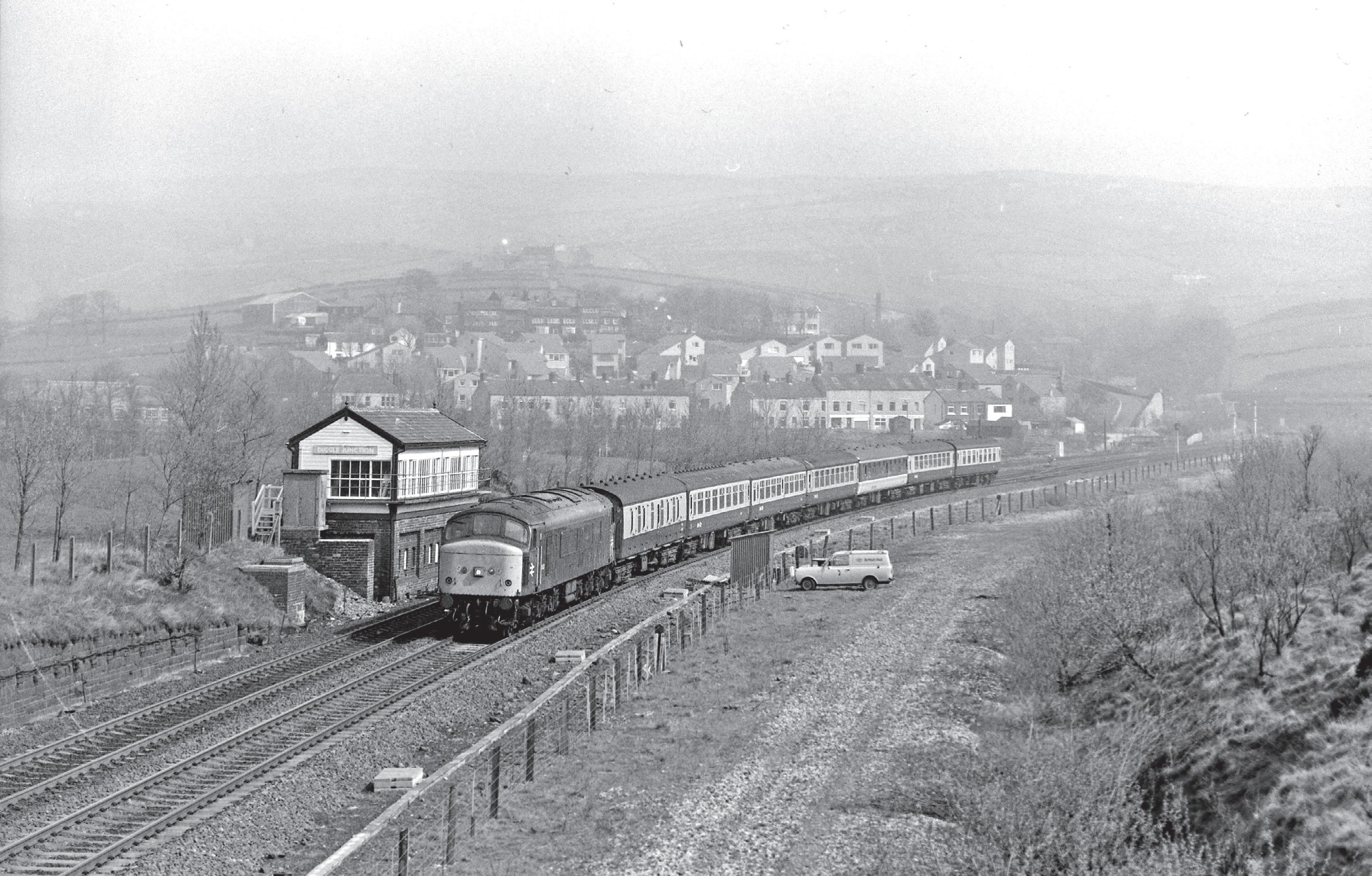
On 24th April 1987, 45103 threads through the Pennine mist towards Liverpool past the impressive Diggle Junction signal box, which was located a few hundred yards west of Standedge Tunnel, between Huddersfield and Manchester. This was such a busy section that it was formerly a quadruple track formation, and the signal box was surrounded by sidings. Parked opposite the box is a classic yellow BR Signalling & Telecommunications department Bedford HA van. 45103 was formerly numbered D116, built at Crewe works in 1961, and withdrawn in August 1988. It was one of the last four Peaks in service.
Fortunately, several Peaks are still with us in preservation. They include two of the original Class 44s and three 46s. 45060 Sherwood Forester is one of the two Class 45/0s that survive. It was photographed outside Tinsley shed, north of Sheffield, on 12th October 1987, in the process of being restored to original condition in green livery with its pre-TOPS number D100. The work included the restoration of its original split headcode boxes, being one of sixty Class 45s which were once fitted thus. The remaining 45s and all of the 46s were built with central route indicator boxes. By the time of withdrawal, most were plated over with the two small headlamps. A third Class 45/0, 45015, made it into preservation but it was allowed to rust away forlornly on a siding at the Battlefield Line in Leicestershire until it was eventually scrapped in 2021.
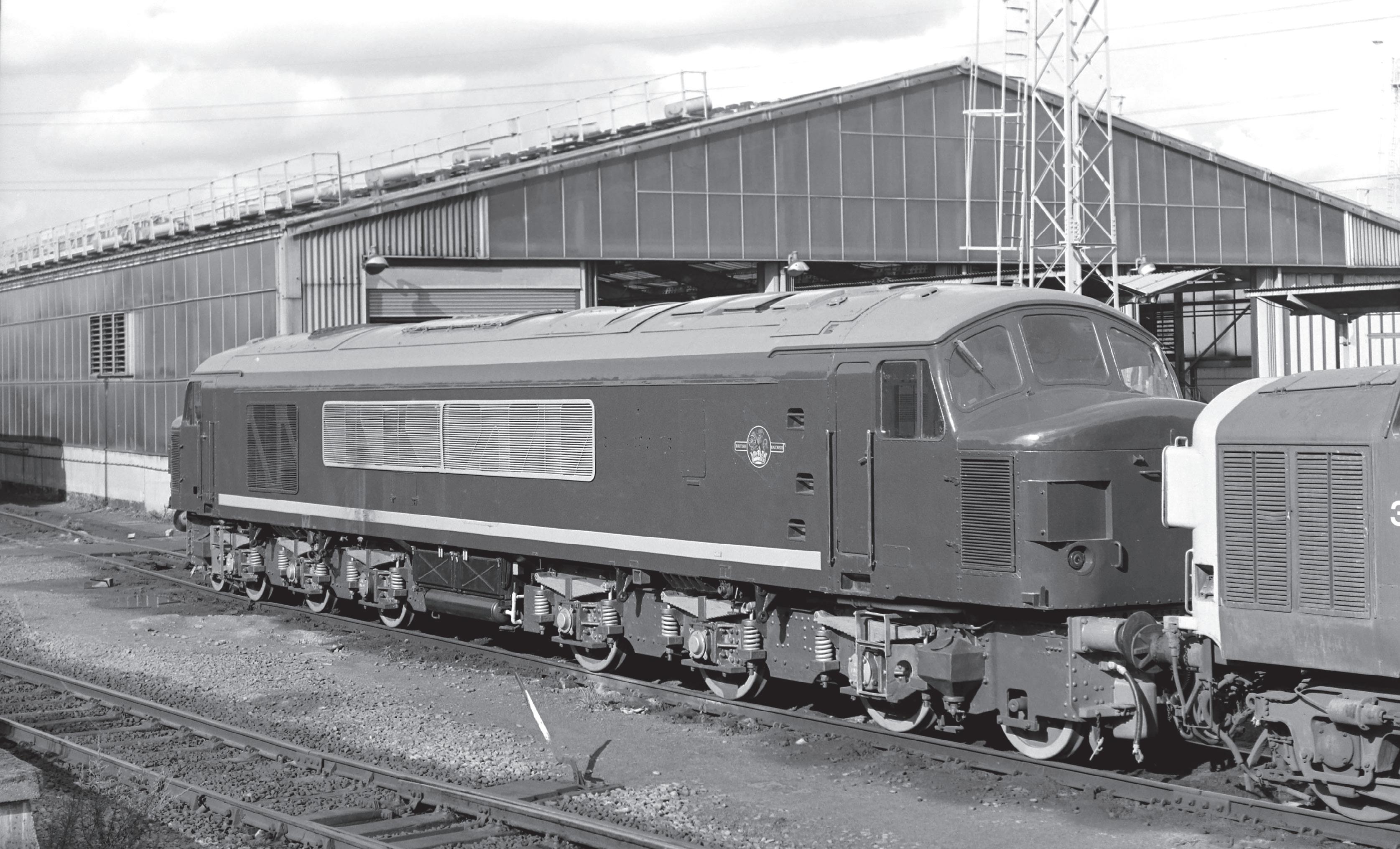
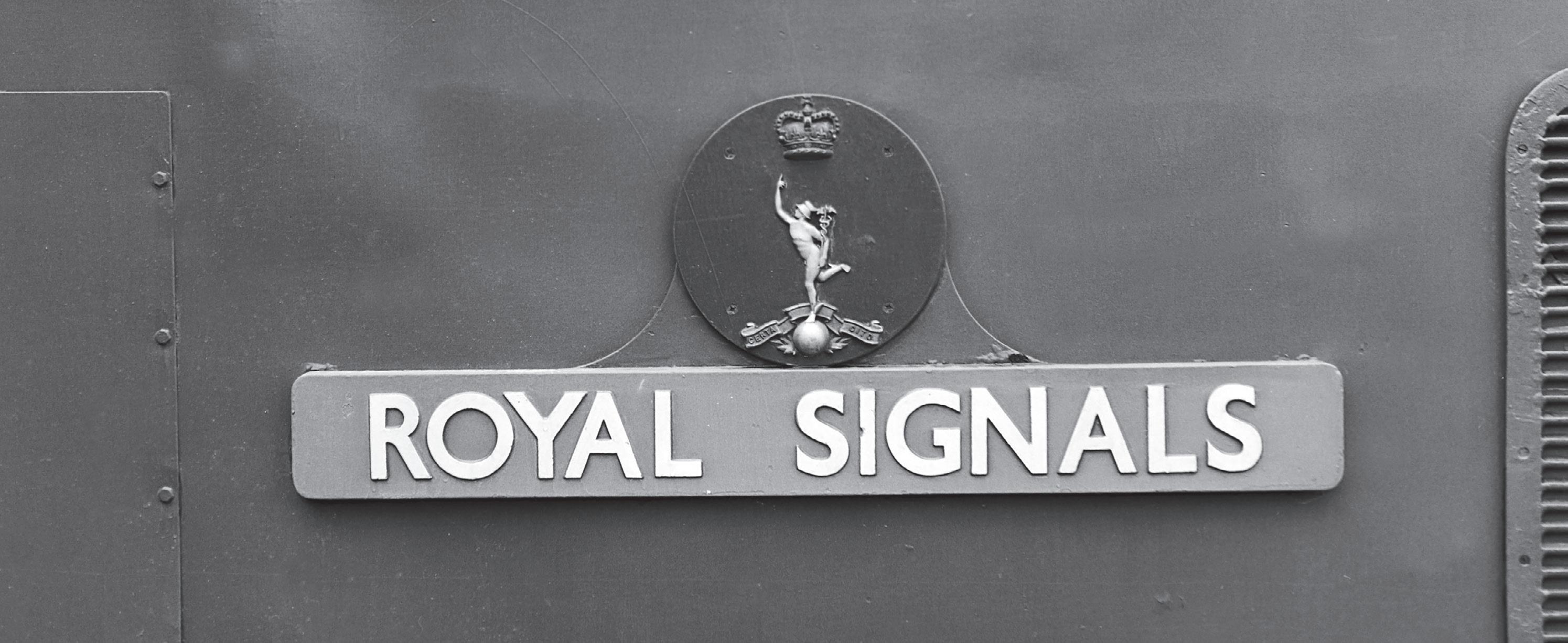
One of the most successful designs to emerge from British Railways’ Modernisation Plan was the Sulzer-engined Type 4 1Co-Co1 diesel-electric. 193 of them were built by BR at its own engineering works at Derby and Crewe, and they were collectively known as the ‘Peaks’. The first ten, later Class 44, were the most powerful of the Pilot Scheme diesel locomotives, and their derivatives, Classes 45 & 46 were fitted with the most powerful railway diesel engines in Western Europe at the time, rated at 2,500hp. For more than twenty years, these versatile locomotives were synonymous with the Midland main line and the northeast to southwest route. They could be seen from Glasgow and Edinburgh to London, Cardiff and Penzance. By 1983, the Class 44s were long-gone, the 46s were on their way out and the remaining Class 45s had no more than five years left in service. During this time, the remaining locomotives attracted a large following among enthusiasts, the self-styled ‘Peak Army’, many of whom will be seen inside these pages, hanging out of train windows. Happily, there are examples of all four subclasses, 44, 45/0, 45/1 and 46 in preservation, many of which are in working order, and some have even returned to the main line.
The photographs in the book run from 1983 until the final demise of the Peaks in 1988, and were mainly taken in northeast England.
